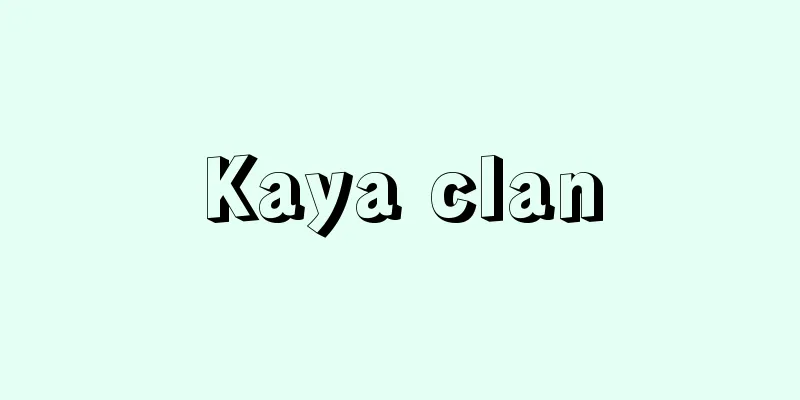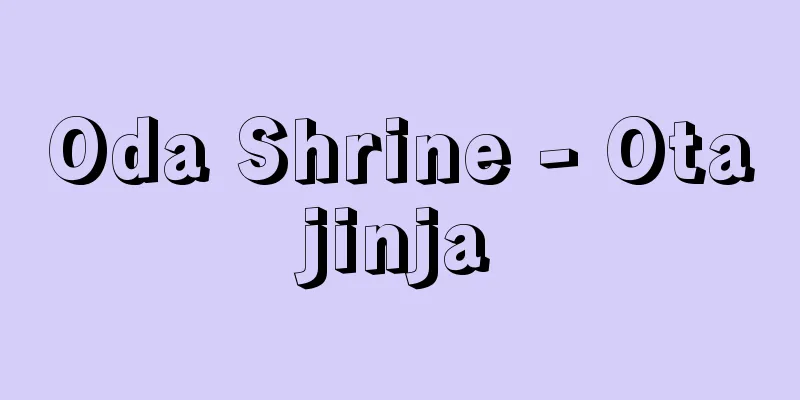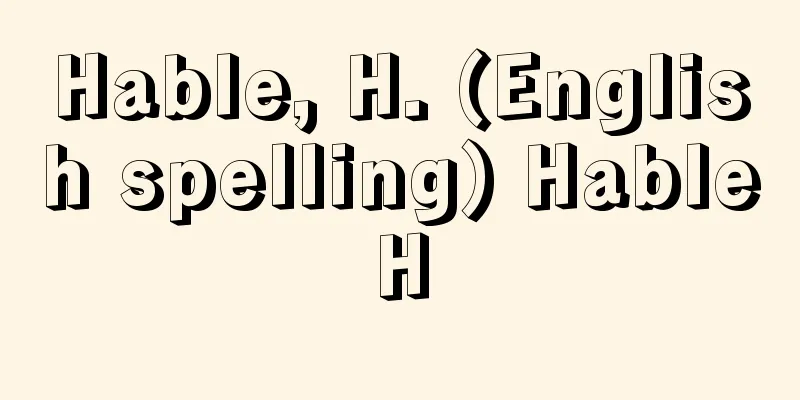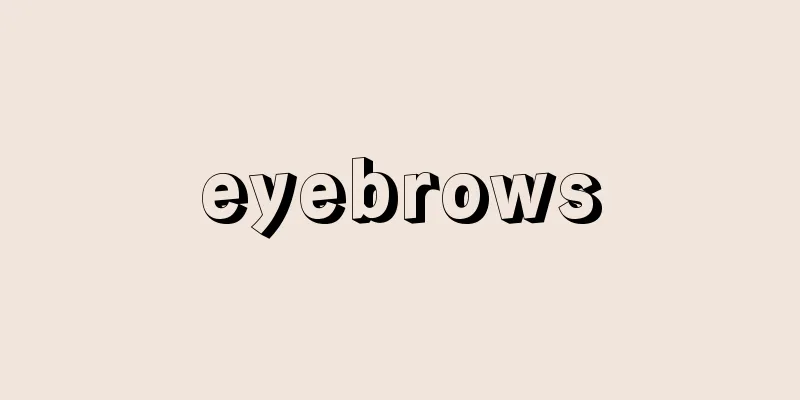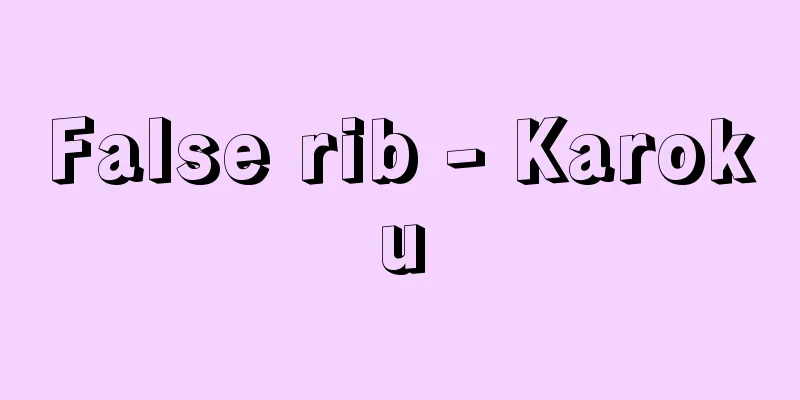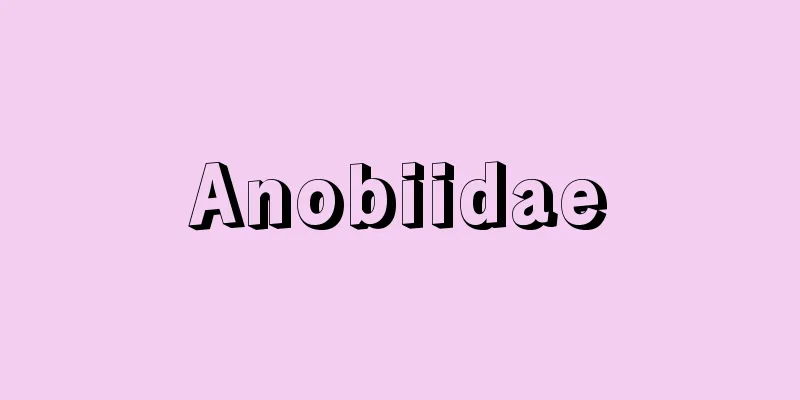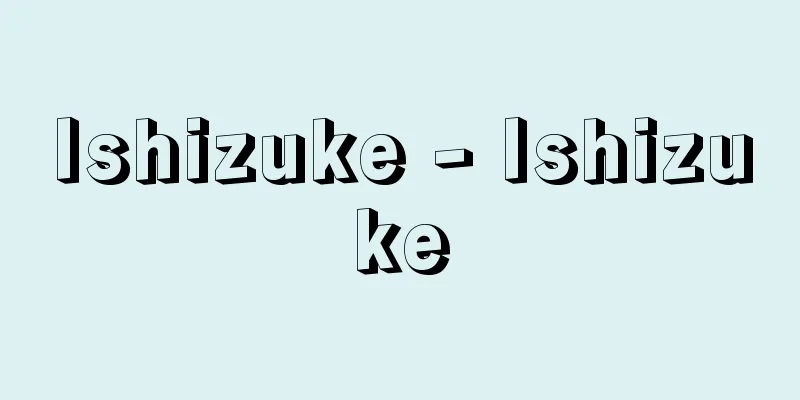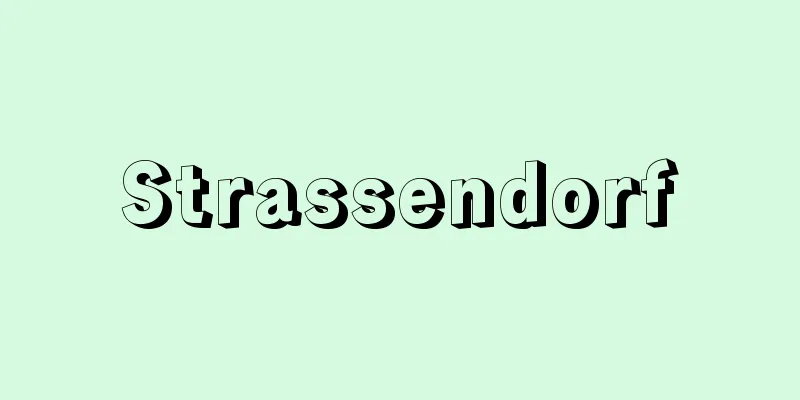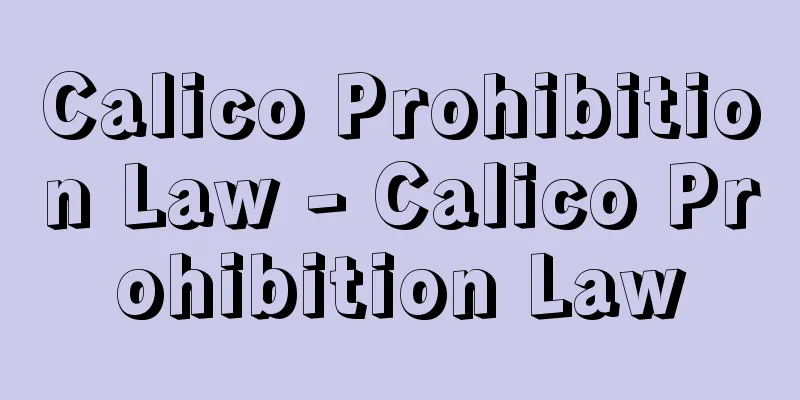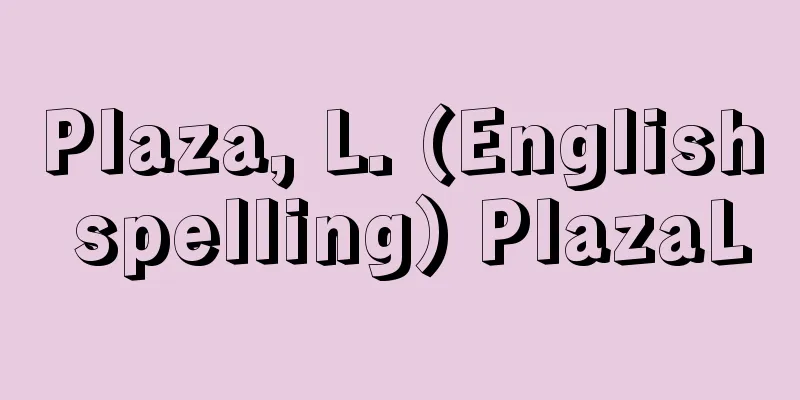Copperplate engraving
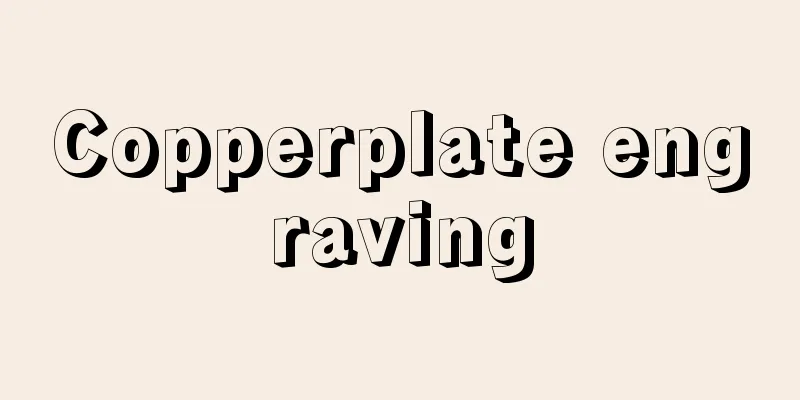
|
A general term for prints that use copper plates as the printing material. Generally, it also includes prints that use steel or zinc plates in a similar manner. Copperplate printing is done using the intaglio method, but the plate-making methods can be broadly divided into direct (dry) and indirect (wet = etching) methods, and there are various techniques for each, and they are often used together. Copperplate printing is the second oldest printing method after woodblock printing, and it emerged in succession in Northern Europe and Italy around the turn of the 14th and 15th centuries. While woodblock printing developed from carpenter's techniques and has a folk artistic feel in both expression and technique, copperplate printing originated from metalworker's techniques and had a high artistic quality from the beginning, making it popular with aristocrats and the like (for the history of copperplate printing, see the "Prints" entry). [Haruki Yaegashi] Direct MethodA method of engraving directly onto the original plate using a burin or other tool to make a plate. [Haruki Yaegashi] EngravingThis is the oldest technique of copperplate printing, in which a line is engraved into a copper plate using a diamond-shaped chisel called a burin (French, engraver). Any copper burrs on either side of the line are removed with a scraper. The resulting line is generally sharp and hard. Printing ink is packed into the line with a tampon or roller, and the ink on the plate is then wiped off with a rag or the palm of the hand. Moistened paper is placed on the plate, covered with a thin piece of felt, and the plate is printed on a copperplate press. The paper is pressed into the line by the elasticity of the felt, and picks up the ink that has been left behind. This printing method is common to copperplate printing (intaglio printing). This is the oldest method of copperplate printing, and was developed artistically in Northern Europe by copperplate engravers known as E.S. engravers (based on the initials of their surnames) and Schongauer, and was elevated to a method of artistic expression comparable to painting by the German Renaissance master Dürer. In Italy, it developed rapidly in the 15th century, mainly in Florence, and was succeeded by the high art of Mantegna and M. Raimondi. [Haruki Yaegashi] dry point (English) point seche (French)This is a method of drawing on a copper plate with an etching needle, which produces thinner, softer lines than engraving. The metal burrs that form during this process are left as a positive effect of the drypoint technique; ink that is held by the burrs and left unwiped creates a subtle bleeding effect when printed. This effect was first used by German engravers from the Amsterdam Drawing House in the late 15th century (so named because many of his works are housed in the museum, and also known as the "household painter" after his famous sketchbooks), but the 17th-century Dutch artist Rembrandt was particularly fond of this effect, and often combined it with etching (see below) to create a rich range of expressions. [Haruki Yaegashi] MezzotintIt is so named because it can produce free intermediate tones, and is also called manière noire (black method) in France because of its characteristic deep and rich shadows. By sanding the entire surface of the copper plate with a tool called a rocker into a fine file-like texture, then scraping it off with a scraper or flattening it with a burnisher, it is possible to obtain a continuous range of tones from black to white. In other words, the parts where the sanding has been completely removed are white, and the untouched parts are printed completely black, and the intermediate tones can be freely adjusted by the way the sanding and flattening are done. Generally, this process is carried out after the outline has been carved by etching. This technique was invented in the mid-17th century by Ludwig von Siegen, a German officer living in the Netherlands, and was brought to England by Prince Rupert, who taught him directly, where it developed rapidly. It eventually replaced engraving as the dominant method for reproducing paintings, but with the spread of photography, it was destined to end its role. In the first half of the 19th century, Turner published a series of works using this technique called "Books of Study," which became very popular. In the 20th century, mezzotint was rediscovered as a technique for creative printmaking, and successful examples can be seen in the works of Japanese artists Hasegawa Kiyoshi and Hamaguchi Yozo, among others. [Haruki Yaegashi] Stipple engravingThis method is also used in the indirect method. In the direct method, the tip of a burin is used to poke the plate surface, creating countless dots, and the density of these dots creates a gradation of light and dark. In the wet method, dots are engraved in the same way on top of a protective asphalt layer (ground) applied to the plate surface, and then the plate is immersed in an acid solution to corrode it. The first person to use this technique was the Italian Giulio Campagnola in the early 16th century (direct method). The Italian printmaker Bartolozzi, who was active in London in the late 18th century, was popular for his elegant pastel-toned prints using this method. [Haruki Yaegashi] Indirect MethodA plate making method in which a corrosion-resistant layer (ground) is applied to the plate surface, and the exposed areas are then corroded with a corrosive solution. This method is also called the wet etching method. [Haruki Yaegashi] Etching (English) eau-forte (French)It is the same as drypoint in that it uses an etching needle to draw, but instead of engraving directly into the copper plate, it only requires scraping away the ground. This allows for free-flowing lines that are closer to a rough sketch. The shading and strength of the lines can be adjusted by stopping the etching midway through, covering the necessary areas (where a weaker line is desired) with corrosion-resistant varnish, and then continuing the etching again. For acids, ferric chloride is used when etching that is faithful to the original line, and nitric acid is used for coarse etching. Dürer was one of the first printmakers to use this method, but he used iron plates instead of copper plates. The method of decorating the surface of iron by etching it had been developed since the Middle Ages in metal crafts such as armor and military equipment, but by the time of Dürer, the acids that could corrode copper had not yet been discovered. Copper plate etching developed mainly in Italy from around the mid-16th century, but it was Rembrandt who fully utilized this expressive effect and made it a representative technique in printmaking art. [Haruki Yaegashi] Soft ground etching (English) vernis mous (French)Instead of the hard ground used in etching, a sticky soft ground is used, paper is placed over it, and a drawing is made on top of it with pencil or chalk. When the paper is peeled off, the soft ground adheres to the paper in the amount of the drawing, exposing the copper surface. The lines that are etched from this are thicker depending on the material used for the drawing, and the unevenness of the paper surface also affects the removal of the soft ground, so it is possible to create the impression of a drawing made with chalk on paper. For this reason, this method was often used as a technique for reproducing drawings. Early examples of this technique being used in creative printmaking include the works of Gainsborough and Turner in the late 18th century in England, but painters in Germany and German Expressionism in the late 19th century favored the roughness and improvisation that this technique brings. In the 20th century, prints with various textures were made by pressing leaves, rough boards, cloth, etc. onto the soft ground, by André Masson and others in France. [Haruki Yaegashi] Liftground etchingA copper plate is painted with a water solution of sugar, gum arabic, and aquatint particles, and the entire plate is then covered with a ground. When this is immersed in acid, the components of the water solution used for the drawing lift the ground from below, corroding any holes or cracks that may have formed. This method is said to have been invented by Gainsborough, but since he used sugar water, it was called sugar aquatint. A famous work using this technique is Picasso's series "Natural History according to Buffon", which was created with a lift ground of an alcoholic solution mixed with aquatint particles. [Haruki Yaegashi] AquatintA copper plate is covered with powdered rosin (aquatint particles) and heated to make it adhere to the plate surface. The parts of the work that are to be white are then covered with varnish and immersed in acid. After a certain period of time, the parts that are to be lightly toned are varnished and immersed in acid again. By repeating this process, several levels of surface gradation of light and dark can be obtained. This method was invented by the Frenchman Jean-Baptiste Le Prince in the mid-18th century. The first printmaker to use this technique to great artistic effect was the Spanish Goya (Los Caprichos, etc.). Aquatint is never used alone, but is generally used in combination with etching. The technique of etching the entire surface with the aquatint method, followed by scraping with a scraper to adjust the light and dark is called aquatint mezzotint. [Haruki Yaegashi] Crayon methodThis is a method devised to obtain the effect of crayon (chalk, pastel) drawings, which were especially popular in the 18th century. Using a group of two or three etching needles, a hammer with many protrusions called a matteoir, or a small roulette with teeth, a drawing is made on a ground applied to a copper plate with an accumulation of small dots, which are then etched with acid. Although it is similar to wet stipple engraving, the crayon method aims to achieve the effect of lines drawn in crayon on rough paper, and was invented by Jean and Charles Francois of France around 1750. Copperplate prints are thought to have been introduced to Japan shortly after the introduction of Christianity, but it appears that the printing of copperplate prints of religious images began in conjunction with Christian missionary activities around the end of the 16th century during the Momoyama period. The production of copperplate prints by Japanese artists was pioneered by Shiba Kokan during the Tenmei era (1781-1789) (etching), and was continued by Aodo Denzen, Yasuda Raishu and others. Copper is a relatively soft metal, which has the advantage of being easy to engrave, but the plate surface is easily damaged by the pressure of the press, and the number of prints that can be made is very limited, especially in drypoint and mezzotint. To compensate for this drawback of copperplate printing, the plate surface is often hardened by steel plating in modern times. Also, printing inks have been mixed in various ways since ancient times, but the standard modern ink (black) is made by kneading lamp soot or powder made from burnt ivory (ivory black) with burnt oil (oil made from burnt linseed oil). [Haruki Yaegashi] "The Material of Copperplate Printing" by Tetsuro Komai (1976, Bijutsu Shuppansha) " "The Techniques of Copperplate Printing" by Yukio Fukazawa (1976, David Publishing)" "Research on Japanese Copperplate Printing (Early Modern Period)" by Yo Kanno (1974, Bijutsu Shuppansha) [References] |From the left: etching needle, roulette, rocker, scraper, burnisher, drypoint needle, burin (engraver) ©Shogakukan "> Copperplate engraving tools (1) Preparing the plate First, prepare a copper plate the size of the sketch and make a plate mark with a metal file (photo). Cover the back with vinyl chloride wallpaper, apply hard ground to the front and let it dry. (2) Drawing Considering that the finished image will be reversed, draw with a needle using the sketch as a reference (photo), and perform the first etching (ferric chloride solution, which is less dangerous, is used as the etching solution). (3) Etching After the first etching, the plate is washed with water and the ground is removed with a solvent. Next, the rosin is fixed to the plate, and the parts that should remain white are covered with varnish, and after drying, the plate is etched a second time. (4) Filling with ink After etching, the plate is washed with water and the ground is removed with a solvent and the rosin with alcohol. Next, fill the etched recesses with ink using a rubber roller, and ink is applied to the entire plate. (5) Wiping off the ink Excess ink on the raised parts is gradually wiped off with cheesecloth, and dirt on the plate mark is removed with a cloth. (6) Pressing Adjust the pressing pressure and place the plate on top of the plate. The pre-moistened paper is placed face down on the plate and covered with twill. The handle is turned at a constant speed to print. (7) Finished Print The twill is lifted and the paper is gently turned over. Using the finished print as a reference, any corrections (steps (2) to (7)) are made and the print is completed. ©Shogakukan "> Copperplate printing process William Hamilton, 1785 Copperplate engraving ( Metropolitan Museum of Art ) Romeo and Juliet by Bartolozzi "The Sleep of Reason Gives Birth to Monsters" 1797-1799 Copperplate engraving from the Chicago Art Institute Goya's "Los Caprichos" Japan's first etching (corrosive copperplate print). The picture is reversed because it is meant to be viewed through a pair of peepholes after being reflected in a mirror. 1783 (Tenmei 3), held at the National Diet Library . Shiba Kokan's "Three Enclosed Scenes" Source: Shogakukan Encyclopedia Nipponica About Encyclopedia Nipponica Information | Legend |
|
銅板を版材とする版画の総称。一般的には、鉄板・亜鉛板を同様の方法で用いたものも含む。銅版画の印刷は凹版法によるが、製版の方法は直接法(乾式)と間接法(湿式=腐蝕(ふしょく)法)に大別でき、いずれも種々の手法があり、また、しばしば混用される。銅版画は木版画に次いで古い版画の方法であり、14世紀から15世紀の変わり目ごろ、北ヨーロッパとイタリアで相次いでおこった。木版画が大工の技術のなかから発達し、表現も技巧も民衆芸術的な趣(おもむき)をもつのに対し、銅版画は金工師の技術に由来し、最初から工芸的な質の高さがあって、貴族などに好まれた(銅版画の歴史については、「版画」の項を参照されたい)。 [八重樫春樹] 直接法ビュランその他の道具で直接原板に彫刻し製版する方法。 [八重樫春樹] エングレービングengraving銅版画の技法としてはもっとも古いもので、ビュランburin(フランス語)、engraver(英語)という菱(ひし)形の断面をもつ鑿(のみ)で銅板に線刻する。線の両側にできる銅のまくれは、スクレーパーscraperで除去する。得られる線は概して鋭く硬い。この線に、印刷用インキをタンポンやローラーで詰め込み、その後、版面のインキをぼろ布や手のひらで拭(ふ)き取る。湿らせた紙を版面にのせて薄いフェルトで覆い、銅版プレスにかけて刷り出す。紙はフェルトの弾力を介して線に押し込まれ、そこに残されたインキを付着させる。この印刷の方法は、銅版画(凹版法の版画)に共通のものである。 銅版画技法中もっとも古いこの方法は、北ヨーロッパでは姓名の頭文字によってE(エー)・S(エス)の版画家とよばれる銅版画家やションガウアーによって芸術的に発達し、ドイツ・ルネサンスの巨匠デューラーによって、絵画にも匹敵する芸術表現の方法に高められた。イタリアでは15世紀にフィレンツェを中心に急速な発達をみせ、マンテーニャやM・ライモンディの高い芸術に引き継がれた。 [八重樫春樹] ドライポイントdry point(英語)point seche(フランス語)エッチング針で銅板上に描画する方法で、エングレービングに比べて細く柔らかい線が得られる。この過程でできる金属のまくれは、ドライポイント技法の積極的効果として残される。つまり、まくれに保持されて拭き残されたインキが、印刷時に微妙なにじみをつくる。この効果を最初に用いたのは、15世紀後半ドイツの「アムステルダム版画素描館の版画家」(その作品の多くが同館にあるためこの名があり、またその有名な素描帳から「家事書の画家」ともよばれる)であるが、17世紀オランダのレンブラントはとりわけこの効果を好み、しばしばエッチング技法(後述)と併用して豊かな表現を生み出した。 [八重樫春樹] メゾチントmezzotint自由な中間トーンを生み出すことができることからこの名があり、また、深く豊かな暗部に特色があるため、フランスではマニエール・ノワールmanière noire(黒の方法)ともよばれる。銅板の全面をロッカーrocker(ベルソー)という道具で細かなやすり状に目立て、これをスクレーパーで削り取ったりバニッシャーburnisherでつぶしたりすることによって、黒から白までの諧調(かいちょう)を無段階に得ることができる。つまり、目立てを完全に削り取った部分は白く、また手つかずの部分は真っ黒に刷られ、中間トーンは目の削り方・つぶし方のぐあいで自由に調整することができる。一般には、エッチングで輪郭線を彫ったのちにこの処理をする。 この技法は17世紀中葉にオランダ在住のドイツ士官ルートウィヒ・フォン・ジーゲンによって発明され、彼から直伝を受けたプリンス・ルーパートがイギリスにもたらし、ここで急速に発達した。そして従前のエングレービングにかわって絵画複製の有力な方法となったが、写真術の普及とともにその役割を終える運命を担っていたといえる。19世紀前半には、ターナーがこの技法による「研鑽(けんさん)の書」の連作を刊行して人気を博している。メゾチントは20世紀になって創作版画の技法として再認識され、とりわけ日本の長谷川潔(はせがわきよし)や浜口陽三(ようぞう)の作品にその成功例をみることができる。 [八重樫春樹] スティップル・エングレービングstipple engravingこの方法は間接法でも行われる。直接法は、ビュランの先で板面をつつくようにして無数の刻点をつくり、その集積密度によって明暗のグラデーションを生み出す。湿式の場合は、版面に施したアスファルトの防蝕層(グラウンド)の上から同様に点刻し、さらに酸の液に浸(つ)けて腐蝕させる。この技法を最初に用いたのは、16世紀初め、イタリアのジュリオ・カンパニョーラであった(直接法)。18世紀後半にロンドンで活躍したイタリア人版画家バルトロッツィは、この方法でパステル調の優美な版画をつくって人気があった。 [八重樫春樹] 間接法版面に防蝕層(グラウンド)を施し、露出した部分を腐蝕液で腐蝕させて製版する方法。湿式、腐蝕法ともいう。 [八重樫春樹] エッチングetching(英語)eau-forte(フランス語)エッチング針で描画する点ではドライポイントと同じであるが、直接銅板に彫刻するのでなく、グラウンドを削り取るだけでよい。このため、素描に近い自由な軌跡の線が得られる。腐蝕を途中で停止し、必要な部分(弱い線が欲しい部分)を耐蝕性のワニスで覆い、ふたたび腐蝕を続けることによって、線の濃淡、強弱を調整することができる。酸は、もとの線に忠実な腐蝕が必要な場合には塩化第二鉄、粗い腐蝕には硝酸の溶液が用いられる。 デューラーはこの方法を最初に用いた版画家の一人であったが、彼が使用したのは銅板でなく鉄板であった。鉄の表面を腐蝕させて装飾を施す方法は、中世から鎧(よろい)や武具などの金属工芸では発達していたが、デューラーのころには、銅の腐蝕にあった酸がまだみいだされていなかったのである。銅板のエッチングは16世紀なかばごろからイタリアを中心に発達したが、この表現効果を十分に発揮させて版画芸術の代表的手法としたのは、レンブラントであった。 [八重樫春樹] ソフト・グラウンド・エッチングsoftground etching(英語)vernis mous(フランス語)エッチングの硬質グラウンドのかわりに、粘り気のある軟らかいグラウンドを用い、これに紙を重ねて、その上から鉛筆やチョークで素描する。紙をはがしたとき、素描された分だけ軟らかいグラウンドが紙に付着し、銅の面が露出する。これを腐蝕した線は素描する材料に応じて太く、また紙の地肌の凹凸も軟らかいグラウンドの除去に影響するので、あたかも紙にチョークなどで素描した感じを出すことができる。このため、この方法も素描の複製技術として用いられることが多かった。創作版画に用いられた早い例としては、18世紀後半イギリスのゲーンズバラやターナーの作品があるが、19世紀末ドイツやドイツ表現主義の画家たちは、この技法のもたらす粗さや即興性を好んだ。20世紀になると、軟らかいグラウンドの上に木の葉、粗目の板、布などを押し付けてさまざまな質感をもった版画が、フランスのアンドレ・マッソンらによってつくられている。 [八重樫春樹] リフト・グラウンド・エッチングliftground etching砂糖、アラビアゴム、アクアチント粒子などの水溶液で銅板上に描画し、その上から版面全体をグラウンドで覆う。これを酸に浸けると、素描に用いた水溶液の成分がグラウンドを下から持ち上げ(リフト)、そこにできた穴あるいは亀裂(きれつ)を腐蝕する。この方法はゲーンズバラの考案とされるが、彼は砂糖水を用いたためシュガー・アクアチントとよばれた。この技法を用いた作品としては、ピカソがアクアチント粒子を混ぜたアルコール液のリフト・グラウンドで制作した『ビュフォンによる「博物誌」』の連作が有名である。 [八重樫春樹] アクアチントaquatint銅板の全面に松脂(まつやに)の粉末(アクアチント粒子)をいっぱいにまいて熱し、版面に固着させる。そして、作品において白くしたい部分をワニスで覆って、酸に浸ける。一定時間後、薄い中間トーンの欲しい部分をニスで止め、ふたたび酸に浸ける。この処理を繰り返すことによって、いくつかの段階の面的な明暗諧調を得ることができるのである。この方法は、18世紀中ごろフランスのジャン・バティスト・ル・プランスによって発明された。この技法を用いてもっとも芸術的効果をあげた最初の版画家はスペインのゴヤである(『ロス・カプリーチョス』など)。アクアチントは単独に用いられることはなく、一般にエッチングの線刻と併用される。アクアチントの方法で全面を腐蝕したのち、スクレーパーで削って明暗の調整をする技法は、アクアチント・メゾチントとよばれる。 [八重樫春樹] クレヨン法crayon mannerこれは、18世紀にとくに好まれたクレヨン(チョーク、パステル)の素描の効果を版画に得るために考案された方法である。エッチング針を2、3本まとめたもの、マットワールとよばれる多数の突起のあるハンマー、歯型のある小さなルーレットなどを用いて、銅板に施したグラウンドの上から小さな点の集積で描画し、酸で腐蝕する。湿式のスティップル・エングレービングに似ているが、クレヨン法は地肌の粗い紙にクレヨンで素描した線の効果を求めるものであり、1750年ごろフランスのジャンとシャルル・フランソアによって考案された。 銅版画の日本渡来は、キリスト教伝来後まもなくと考えられるが、桃山時代の16世紀末ごろには、キリスト教の布教活動に伴い聖像銅版画の印刷が開始されたようである。また、日本の画家による銅版画の制作は、天明(てんめい)年間(1781~1789)に司馬江漢によって端緒が開かれ(エッチング)、亜欧堂田善(あおうどうでんぜん)、安田雷州(らいしゅう)らがこれを受け継いだ。 銅は比較的軟らかい金属なので、彫版しやすい利点のある反面、プレスの圧力で版面が損なわれやすく、とくにドライポイントやメゾチントでは印刷できる枚数は非常に限られている。銅版画のこの欠点を補うため、現代ではスチールめっきを施して版面を硬化することが多い。また印刷インキは、古来さまざまな調合が行われてきたが、近代の標準的なインキ(黒)は、ランプの煤(すす)や象牙(ぞうげ)を焼いた粉(アイボリー・ブラック)を、焼き油(あまに油を焼いた油)で練り合わせてつくる。 [八重樫春樹] 『駒井哲郎著『銅版画のマチエール』(1976・美術出版社)』▽『深沢幸雄著『銅版画のテクニック』(1976・ダヴィッド社)』▽『菅野陽著『日本銅版画の研究(近世)』(1974・美術出版社)』 [参照項目] |左から、エッチング針、ルーレット、ロッカー、スクレーパー、バニッシャー、ドライポイント・ニードル、ビュラン(エングレーバー)©Shogakukan"> 銅版画の道具 (1)版の用意 まず下絵大の銅板を用意し、金属やすりでプレートマークをつける(写真)。裏面に塩化ビニルの壁紙を張り、表面にハードグラウンドを塗布し乾燥させる(2)描画 完成画が左右逆になるのを考慮しながら、下絵を参考にニードルで描画(写真)し、1回目の腐蝕をする(腐蝕液は危険性の低い塩化第二鉄液を使用)(3)腐蝕 1回目の腐蝕後、版を水洗し、溶剤でグラウンドを除去する。次に松脂を版に固着させ、白く残す部分をワニスで覆い、乾燥後、2回目の腐蝕をする(4)インク詰め 腐蝕後、版を水洗し、グラウンドを溶剤で、松脂をアルコールで除去。次に腐蝕した凹部にゴムローラーでインクを詰めながら、版全体にインクを盛る(5)インクのふきとり 凸部の余分なインクは、寒冷紗で徐々に拭き取り、プレートマークの汚れは布で取る(6)プレス プレス圧を調整し、プレートの上に版を置く。あらかじめ湿しておいた紙を版に伏せ、その上に羅紗をかぶせる。一定の速さでハンドルを回し、刷りを行う(7)刷り上り 羅紗を上げ、静かに紙をめくる。刷り上りを参考に加筆修正((2)~(7)の過程)し、完成させる©Shogakukan"> 銅版画制作過程 ウィリアム・ハミルトン画 1785年 銅版画メトロポリタン美術館所蔵"> バルトロッツィ『ロメオとジュリエット』 「理性の眠りは怪物を生む」 1797~1799年 銅版画シカゴ美術研究所所蔵"> ゴヤ『ロス・カプリーチョス』 日本最初のエッチング(腐食銅版画)。鏡に写して覗き眼鏡で鑑賞する眼鏡絵のため、左右が逆に描かれている。1783年(天明3)国立国会図書館所蔵"> 司馬江漢『三囲景』 出典 小学館 日本大百科全書(ニッポニカ)日本大百科全書(ニッポニカ)について 情報 | 凡例 |
<<: Tang Ban Alliance Monument
Recommend
Mathematical symbols
Symbols used to express mathematical expressions....
Yamanote
〘Noun〙① The direction of the mountains. The direct...
Carex breviculmis (English name)
…[Tetsuo Koyama]. … *Some of the terminology that...
Lifelong tribe
...The three highest varnas were called the rebor...
Hong Ren-gan; Hung Jên-kan
[Born] Daoguang 2 (1822) [Died] 1864, 3rd year of ...
Rebirth - Rebirth
...Out-of-body experiences have long been conside...
Zheng Zhen (English name)
1806‐64 A Chinese scholar and poet in the late Qin...
Aidoo, AA (English spelling) AidooAA
…However, the movement to redefine popular histor...
Fisheries system - Gyogyoseido
A legal system that regulates the use of fishing g...
Suekata - Suekata
〘 noun 〙 (Later, it was also called "suezukat...
Sengendou
A Chinese scholar of characters and phonology. Hi...
Takaki [town] - Takaki
A former town in Kitatakaki District, eastern Naga...
"The Life of Jesus" (Renan)
…In the Christian church before the 18th century ...
Setsuko Kujo - Kujo Sadako
…Empress of Emperor Taisho. Her name was Sadako. ...
Akugenta
A historical drama written by Matsui Shoyo (Shoo)...
